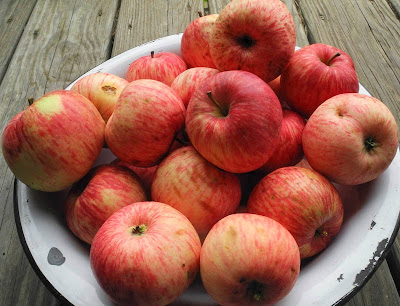One after another, uncompromising closeups, details of skin brutally visible, humanly vulnerable; often seen from below, the faces loom over us. Watching
Carl Theodor Dreyer's 1928 silent film
The Passion of Joan of Arc is both emotionally difficult and exhilarating. The exhilaration comes from the remarkable artistry of it, the realization that this is one of the greats in the history of cinema, the sense of its modern and unique approach to storytelling. But Dreyer spares us nothing, takes us, and his actors, into a deep well of anguish. The great actress of this film, Renée Falconetti, begged Dreyer not to crop her hair so close in this scene, but he had to get as close to life as he could: the pain and humiliation of being shorn after a compelled abjuration, an admission that she was not sent by God. There is an excellent commentary by Casper Tybjerg on the
Criterion disk, and it is by listening to it that I learned a great deal about the technique and motivation of the movie; in addition, all the Dreyer quotes are from the commentary.
From Dreyer:
The human is of central importance to all art, and of all things human, the human face is what has greatest interest. It is, so to speak, a declaration of content for the soul, and in its delicate shifts, one can read the most delicate nuances of the emotions, which words and gestures are incapable of expressing.
In these images of Falconetti's Joan, we see her struggling with her faith, her desire to survive, her acknowledgment of her coming martyrdom. Of Falconetti's acting, Dreyer said:
It was her who created the images, not me.
There was a technical innovation in film that allowed such detailed and unadorned closeups: the invention of
panchromatic film, which reproduced faces realistically, without the need for makeup.
There are many unsettling shots, here of the barber who cut Joan's hair, listening to her as she realizes that she can't accept her confession, but must be true to her visions; the low and severe angles heighten tension.
The sets are all simple to the point of austerity, the more to highlight the human emotions. The supreme judge appears in Joan's cell, low in the frame, while a cross is cast on the wall from the light of an unseen window. These unusual compositions, seen often, are startling; they point to the high art of this film and its thoughtfulness; they take us beyond the ordinary, everyday reality to something deeper.
These are the faces of the judges, seen in the courtroom in a scene before the one above; they are strong, emotional, as real and present as is possible on film. Dreyer wrote that an artistic cinema would entail "first and foremost, a stronger accentuation of the closeup", so that the faces "become psychologically much more profound".
Joan's death at the stake is horrifying, as the smoke obscures her face....
...and the camera shifts from her final agony to the grief of the common people, the French she has touched and inspired, and who rebel against the brutal English soldiers at the film's end. The final shot is of the burning stake, and a cross. Dreyer said of this film that it was "a hymn to the triumph of the soul over life."
Rogier van der Weyden, The Descent from the Cross, 1435, detail. Image from
Wikipedia.
Thinking about
The Passion..., its similarity to early Netherlandish painting came to mind. In both there is a clarity and precision, a close attention to the nuances and particularities of facial expressions in portraits of specific individuals. Tybjerg mentions in the commentary for the film that Dreyer looked at miniature painting for information about clothing and environment, so it's not farfetched that he would also have been thinking of panel paintings, made shortly after the death of Joan of Arc, which was in 1431.
Hugo van der Goes,
A Benedictine Monk, ca. 1478, from the Metropolitan Museum of Art
website.
This monk could have been one of the characters in Dreyer's film.
Master of the Taking of Christ, Taking of Christ, detail, ca. 1454-64.
The final scenes of The Passion of Joan of Arc are meant to remind us of other holy beings, unjustly accused, going to their deaths as martyrs. Whether religious or not, we can respect those of deep faith, in whatever just cause, and the willingness with which they will suffer for it. Dreyer said of his film
I seek nothing but life itself.























































